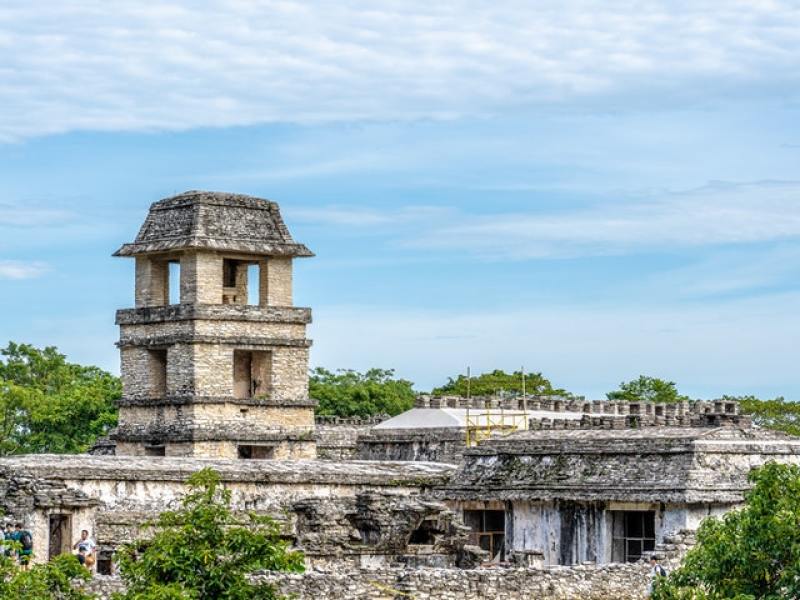
Archeological workers in the Iraqi capital have unearthed about a dozen ancient relics and manuscripts relating to several saints.
Archaeologists working to restore the historic Syriac Orthodox Mar Thomas Church in Mosul, Iraq have discovered ancient relics and manuscripts that speak about several biblical saints. The archeological workers were in the middle of restoring the Mosul church that had been damaged by Islamic State forces four years ago when they came across the discoveries.
According to the Christian Post, archeologists found manuscripts in Syriac and Aramaic and six stone containers adorned with Aramaic inscriptions. Some of the inscriptions related to Saint Theodore, Saint Simon, Mor Gabriel, Saint Simeon, and other well-known figures.
One of the stone containers had an inscription about Saint Theodore, who is known as a Roman soldier from Corum in Turkey in the third century BE who was executed for converting to Christianity. Another container featured relics of Saint Simeon the Wise who lived in the first century CE and according to Christian tradition had "welcomed the infant Jesus in the Jewish Temple of Jerusalem."
Archeologists also found relics of Saint John, one of Jesus' first apostles who was known by the Hebrew name Yohanan ben Zavdi. Other relics that were found celebrated writer and Syrian Orthodox Regional Primate Saint Gregory Bar Hebraeus, who served between 1264 to 1286 CE.
Watchdog International Christian Concern reported, "The discovery of the hidden relics at this church is another encouraging development in the broad effort to restore and protect Christian cultural heritage in Iraq after the damage done by the Islamic State."
Also Read: 'Good Shepherd' Ring Depicting Jesus Found In Roman-Era Shipwreck Near Israel
Mosul Church Sought to Be Restored Following Islamic State Attack
The Mosul church in which several Christian relics were recently found is being continuously restored following the devastating effects of the Islamic State forces' attacks. According to the Jerusalem Post, the Mosul church is believed to date back to the seventh century CE and built on the site where Christian tradition said the house of Apostle Thomas lived during his stay in the capital.
The original Mosul church was first damaged in the 18th century during the Persian siege in the capital, which was then part of the Ottoman Empire in 1743. While a peace treaty between the Ottoman and their Persian adversaries was eventually signed to end the siege, both parties once again engaged in a 10-day Battle of Kars just two years later. A battle broke out near Mosul after the Ottoman sultan violated the terms of the agreement.
Today's Mosul church was rebuilt by the 18th century government of Mosul as a sign of gratitude to the Christians who helped defend the city from attacks. But in 2014, Islamic State forces occupied the city and vandalized the Mosul church.
VOA News reported in 2017 that Iraqi militiamen who defended Mosul from Islamic State forces found that the attackers destroyed relics dating back more than 2,000 years. Marwa Rashid, a spokeswoman for Iraq's Popular Mobilization Forces, which drove out the Islamic State forces, reported that, "The sculptures and engraved images are destroyed, but the walls and towers of the kingdom of Hatra remain standing. There are many holes and scratches on the walls of the kingdom due to IS bullets."
Since 2014, Islamic State forces have destroyed dozens of historical sites in Iraq and Syria, including churches, mosques, and Shi'ite religious halls called hussainiyahs. Islamic State forces claimed that these shrines and statues must be destroyed because they are honoring "false idols." Iraqi units said that the Islamic State forces planted land mines around the eastern side of the Hatra south of Mosul to prevent Iraqi forces from entering.
The United Nations' cultural heritage arm, UNESCO called the destruction a war crime and urged political and religious leaders to address it. Now, the International Alliance for the Protection of Heritage in Conflict Areas is working with the Iraqi government to allot $328,000 toward restoring the Mosul church, an effort that began last year. Meanwhile, UNESCO's effort called "Reviving the Spirit of Mosul" is also underway and will cost about $100 million.
Iraq's population is overwhelmingly Muslim. However, it does host several ancient Christian communities, which are estimated to be around 200,000 to 300,000 people, which is a steep decline from the 1.5 million Christians who lived in Iraq before the U.S. invasion in 2003.
Today, there are 14 officially recognized Christian sects in Iraq, mostly based in Baghdad, Nineveh province, and the Kurdistan region, Reuters reported. About 2% of the Iraqi Christian population are Arab Christians. In Baghdad, there are three Greek Orthodox and four Coptic Orthodox churches, as well as 57 Roman Catholic churches across Iraq.
Related Article: Archaeologists Find 'Boat-Like Formation' Matching The Bible's Description About Noah's Ark In Turkey



















